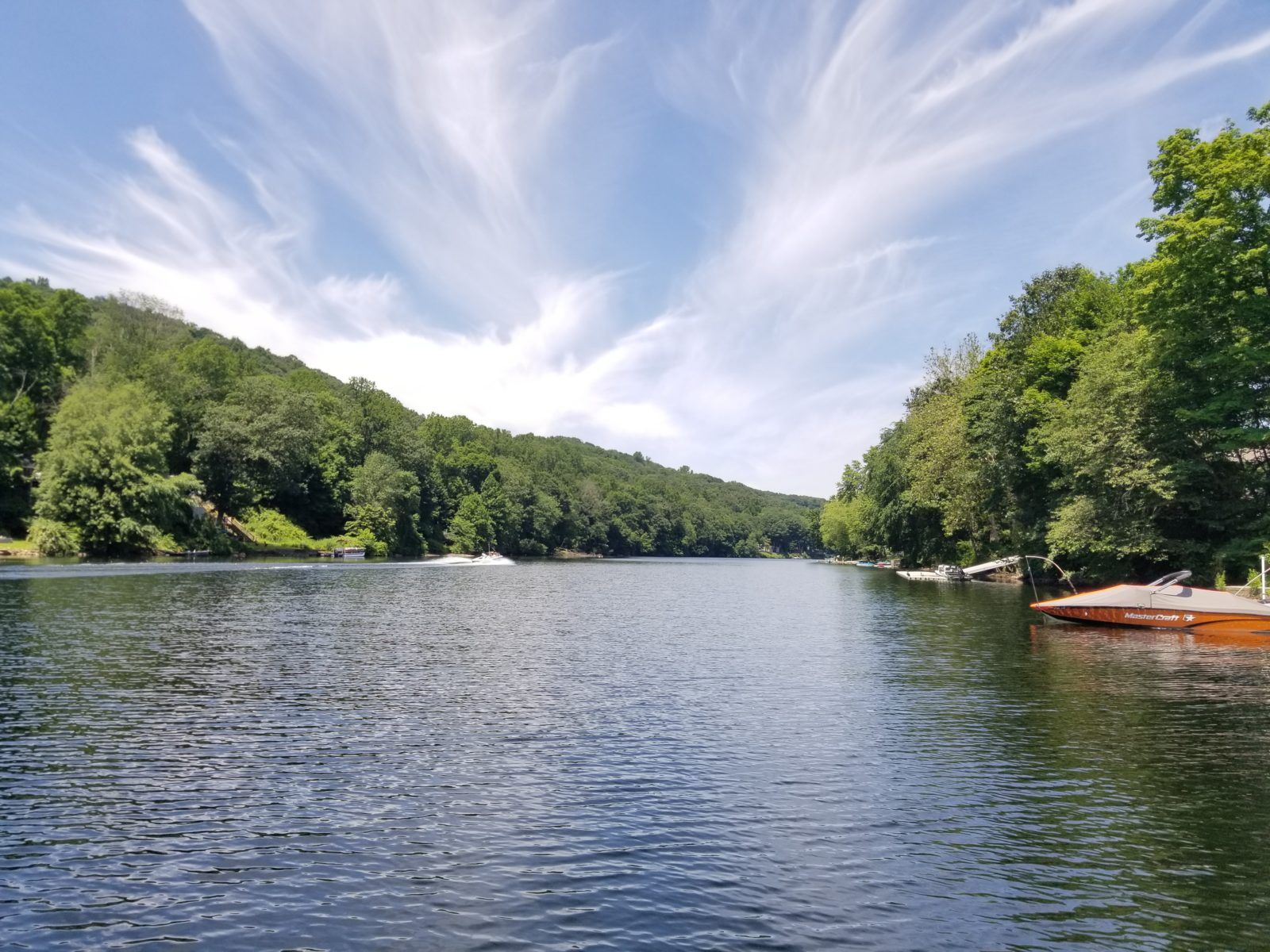Invasive Species Highlight: Mudmat
October 23rd, 2018
AS SEEN IN Northeast Aquatic Plant Management Society Nor’Easter Newsletter
Written by Industry Experts Emily Mayer, Aquatic Biologist and Kate Arnao, seasonal team member
As its name suggests, mudmat (Glossostigma cleistanthum) is an invasive aquatic plant species that forms dense, green mats in littoral zones. The iconic bunny ear-shaped leaves of mudmat serve as a unique characteristic when identifying this species. The leaves grow in pairs along thin rhizomes, with narrowing stems at the base and widen into an oval shape at the tips.
Mudmat can thrive both as a submerged and emergent plant depending upon the location within the waterbody. This species generally prefers oligotrophic conditions, consisting of high transparency readings, low pH, and low pond nutrients. They can form “carpet-like” mats along the bottom of waterbodies, averaging from 10,000 to 25,000 plants per square meter, and can reach depths of up to two meters.
 Submersed mudmats grow year-round and also tend to have larger leaves than the emergent mats, reaching between 0.7 and 5.7 cm in length. The emergent mudmats have significantly smaller leaves only reaching between 0.5 and 1.1 cm in length. Submerged mudmats can propagate using an enclosed flower, classifying it as a cleistogamous self-pollinating plant.
Submersed mudmats grow year-round and also tend to have larger leaves than the emergent mats, reaching between 0.7 and 5.7 cm in length. The emergent mudmats have significantly smaller leaves only reaching between 0.5 and 1.1 cm in length. Submerged mudmats can propagate using an enclosed flower, classifying it as a cleistogamous self-pollinating plant.
However, if water recedes and the plant becomes emergent, it produces insect pollinating chasmogamous flowers. Emergent mudmats behave like annual plants, which become dormant during the winter months, unlike the submersed type. They also have the capability of producing fruit that hold prolific seeds in capsules, allowing them to disperse easily.
Mudmat is native to Australia and New Zealand, but was first discovered in the United States in 1992 in Hamburg Cove, Connecticut. From this single location, the invasive species expanded along the east coast, spreading to several sites in Connecticut, New Jersey, Rhode Island, and Pennsylvania. It was most likely introduced by an aquarium release, and now has been further spread by other vectors; including migrating water fowl and recreational watercraft activities.
Due to its small size, this species is unlikely to be a serious threat to recreational activities, but could be an ecological threat to native aquatic plant and animal communities, such as rare, threatened or endangered species that occupy the same habitat niche.
Currently, the distribution of mudmat continues to be concentrated in the North-Eastern area of the United States, further supporting the importance of preventing the spread of mudmat throughout the rest of the country.
Find your Water Quality Solution
Contact the experts at 888-480-5253 for all of your lake, pond and fisheries management needs.
SOLitude Lake Management is a nationwide environmental firm committed to providing sustainable solutions that improve water quality, enhance beauty, preserve natural resources and reduce our environmental footprint. SOLitude’s team of aquatic resource management professionals specializes in the development and execution of customized lake, pond, wetland and fisheries management programs that include water quality testing and restoration, nutrient remediation, algae and aquatic weed control, installation and maintenance of fountains and aeration systems, bathymetry, mechanical harvesting and hydro-raking, lake vegetation studies, biological assessments, habitat evaluations, and invasive species management. Services and educational resources are available to clients nationwide, including homeowners associations, multi-family and apartment communities, golf courses, commercial developments, ranches, private landowners, reservoirs, recreational and public lakes, municipalities, drinking water authorities, parks, and state and federal agencies. SOLitude Lake Management is a proud member of the Rentokil Steritech family of companies in North America.










